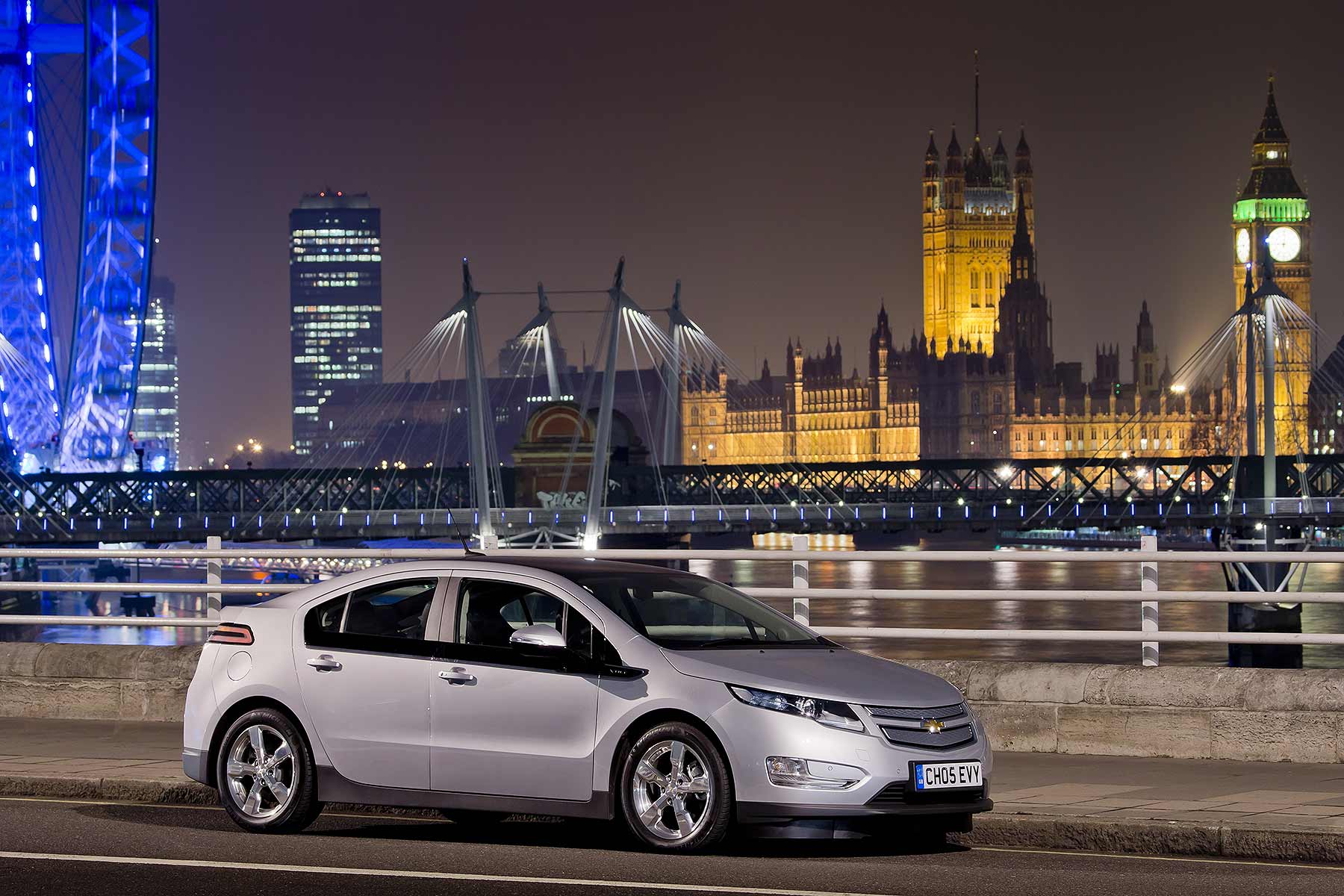
The Chevrolet Volt promised a revolution. A revolution of propulsion, of design and for a newly-adventurous General Motors. Sadly, it failed to sell in significant numbers. Yet there is little wrong with the Volt in itself, and a lot that is right. And yes, genuinely revolutionary.
This car, and its slightly more handsome Vauxhall Ampera cousin, are so rare in Britain that it’s worth reminding ourselves what this revolution is. Which is an E-REV, or extended-range electric vehicle. Today, we’d probably call it a plug-in hybrid.
On battery power alone, it’s capable of travelling 30-50 miles, which is more than enough for most commutes. When your volt and amp supply is exhausted, you have an 86hp petrol engine that kicks in to part-replenish the battery and provide the 150hp electric motor with juice. This enables you to travel another 310 miles without plugging into a power supply or pumping petrol into the tank.
The revolutionary part of all this is that you have a zero-emissions electric vehicle with a decent range when the battery’s exhausted, a pretty economical car when the petrol generator is running and a spectacularly economical car when it’s running on electricity alone. And a spectacularly green one, should the electricity used to recharge it come from a renewable source.
Taking on Toyota
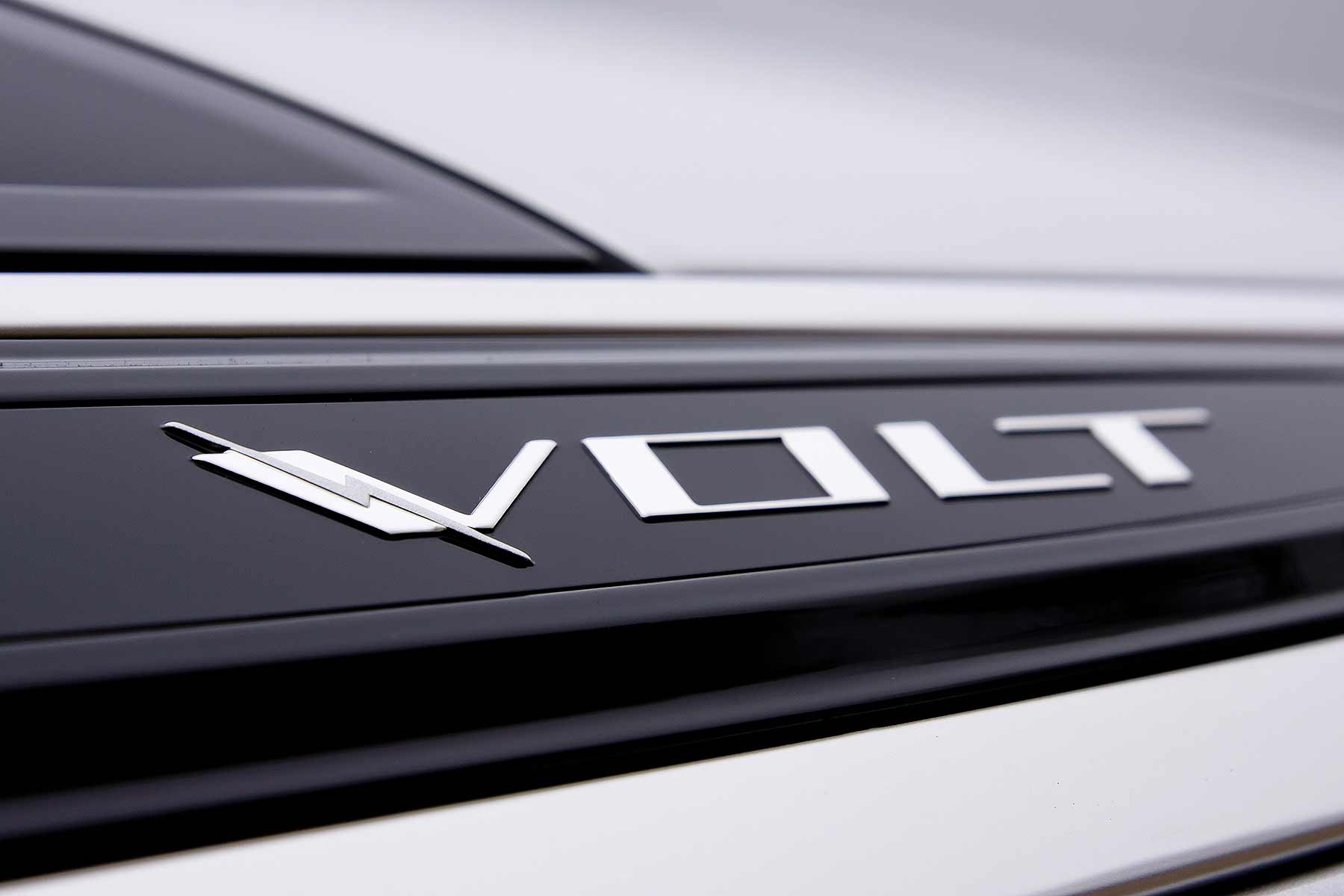
All of which sounds relatively simple conceptually, but it required a gargantuan research and development push (and pile of money) from GM to realise. Its tasks included the development of lithium-ion battery packs for safe use in cars, and evolving safety systems that would enable the Volt to score the full five stars in Euro NCAP crash tests.
Indeed, when GM triggered the serious investment phase in the programme, the project’s bosses freely admitted that they weren’t actually sure that the Volt could be developed for the showroom because the battery technology wasn’t where it needed to be.
Which might make you wonder why GM wanted to make such a large bet on a semi-unknown technology. There are lots of reasons, of course, but a major one was that this often troubled organisation began to get fed-up with the positive PR that Toyota was getting with its Prius hybrid, and how few glowing column inches GM was winning for its (admittedly not-for-sale) fuel cell initiatives, the cost-effective hybrid system it had developed for its big trucks and the fact that its recently acquired Hummer brand was being vilified, despite its trucks being no more thirsty than many rivals.
Plenty of the kicking was justified – a Breaking Bad Pontiac Aztec, anyone? – but not all of it was, and a man getting particularly cheesed off with this situation was one Bob Lutz.
Lutz actually
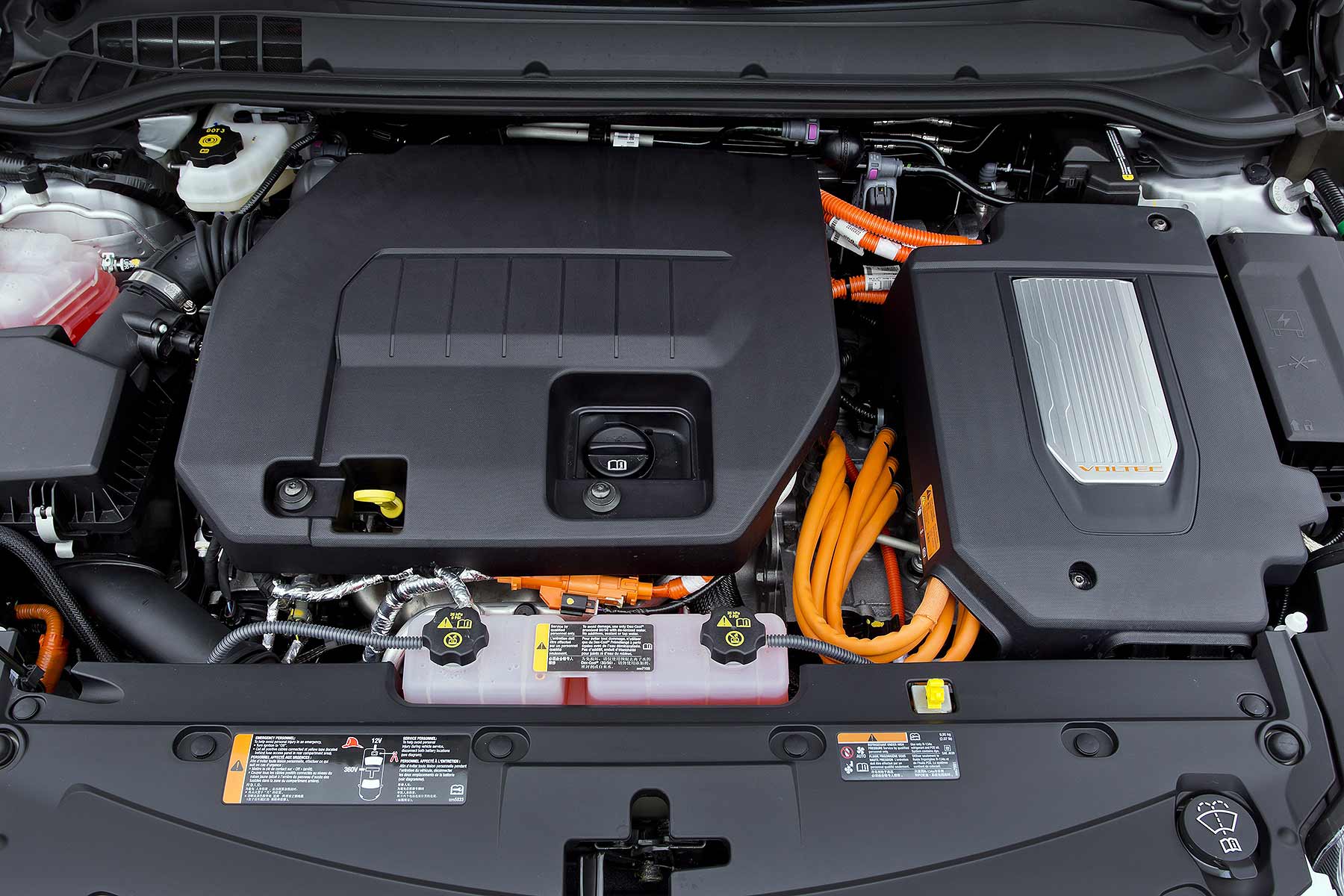
Car guy, business book author, fighter jet flyer, classic car collector and serially successful auto executive, Lutz made several failed attempts to convince his bosses that GM should build a new electric car to take on Toyota.
That his bosses were reluctant is understandable when you consider their all-too-recent memories of the ill-starred, patchily admired, feature-film-inspiring PR disaster that was the EV1. GM eventually crushed most of these neat and rapid little electric coupes, squeezing the life out of any PR advantage they might have garnered and prompting widespread (and misguided) accusations that General Motors had killed the electric car. It hadn’t, but it could certainly have handled the project better.
So Lutz’s attempts to trigger a new EV project were repeatedly batted away, until the day that Tesla launched its Elise-based Roadster with a lithium-ion battery pack, a 200-mile range and a 0-60mph time of 4.0 seconds. That a Silicon Valley start-up was showing GM the way was enough to get Lutz a grudging go-ahead and the chance, he hoped, to win back some of Toyota’s hybrid advantage.
Danger! High Voltage
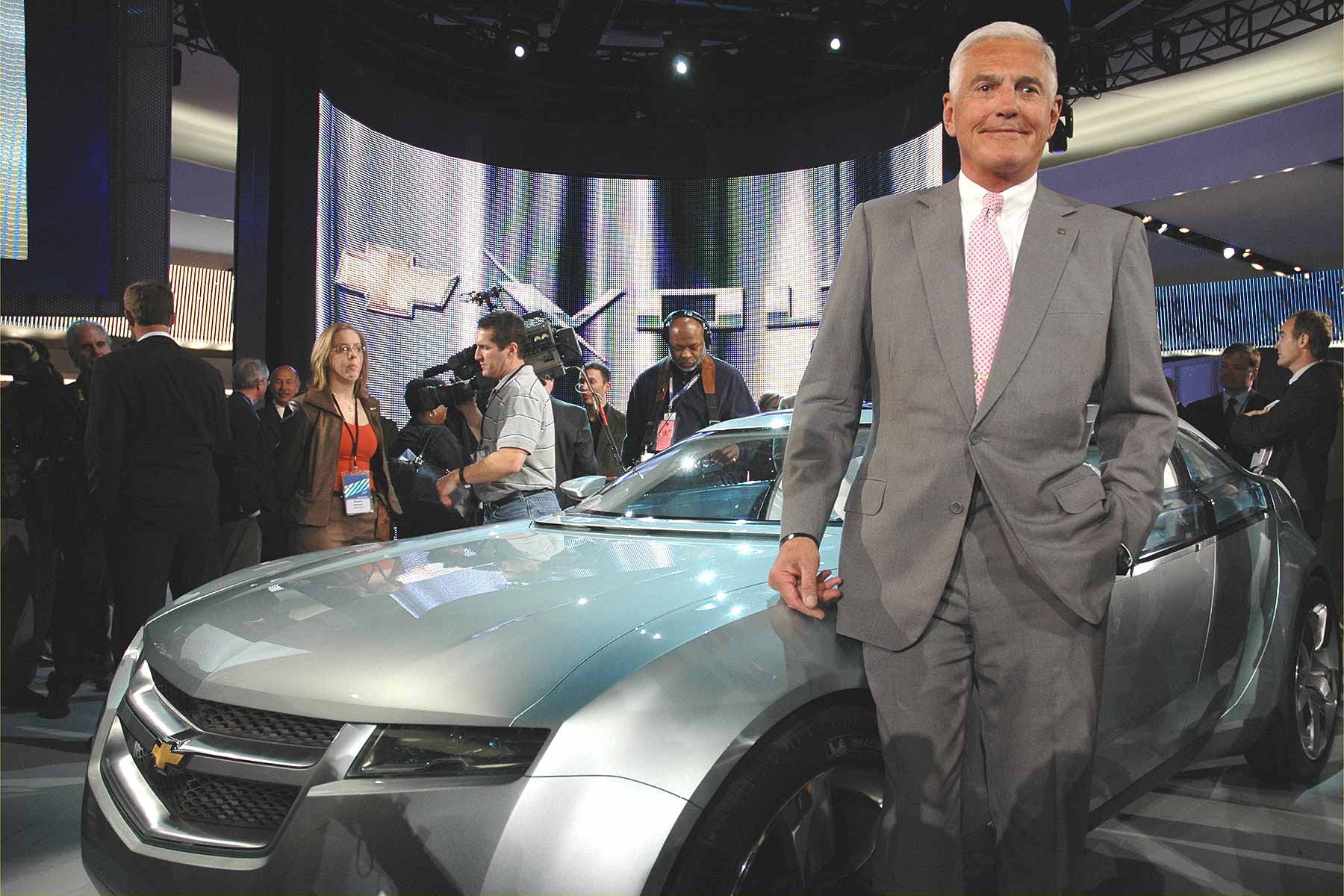
His electric car very rapidly turned into something else when engineering colleague Jon Lauckner persuaded Lutz, with the aid of a pad and a gold-nibbed fountain pen, that what was needed was a range-extending hybrid and not a pure EV. The batteries required to give an EV a decent range (i.e. something a lot more than the 100 miles possible at the time) would have been more expensive than the entire car at that point, argued Lauckner. He saw a range-extender as a way to reduce the size and price of the battery pack to relatively affordable levels.
GM showed a sleek concept called the Volt at the 2007 Detroit show, which won the kind of headlines Lutz was dreaming of, and gave GM the headache of delivering on its promise – something this American giant often failed to do. Four long years and many press briefings later, a Volt emerged that looked nothing like the original, whose shape sliced air about as cleanly as a combine harvester. But it certainly contained the promised technology and, what’s more, it worked.
True, there were some early troubles. GM’s foolish claim that the Volt only ever ran on electric power was eventually uncovered, the petrol generator engine occasionally lending a direct hand when the car was running flat-out to save the battery. A fire from a parked test car didn’t help its case either, but mostly the reviews were positive. Positive enough to win it a heap of awards, including the 2011 World Green Car of the Year.
The cost of going green
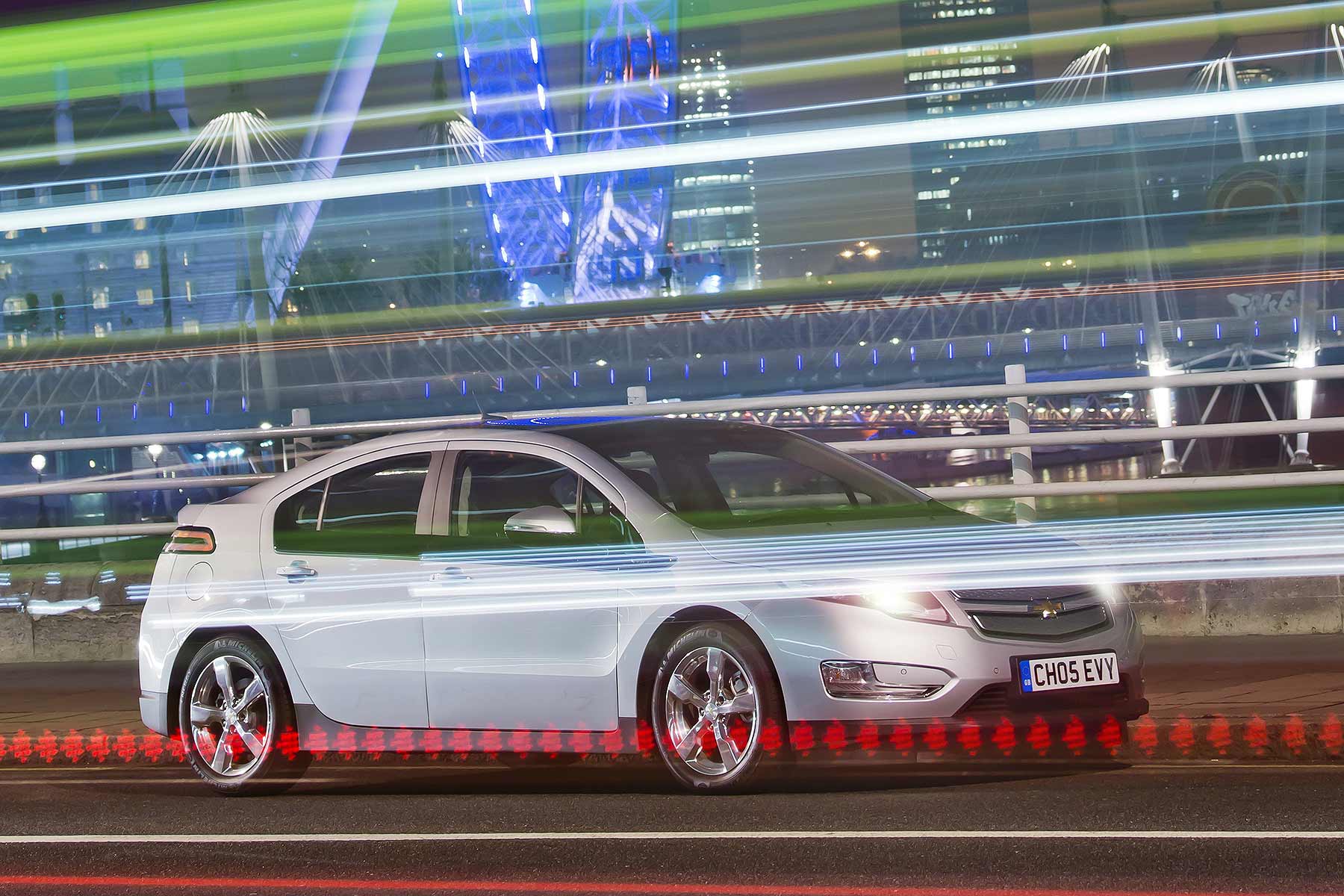
But none of this was enough to overcome the one big problem with this revolution: it was not a revolution of the people. The Volt and Ampera were simply too expensive to silently glide onto people’s radar. Even after generous government subsidies here and in the US, the pair cost getting on for twice the price of a similarly-sized Vauxhall Astra or Chevrolet Cruze.
There was the further drawback of only four seats rather than the usual five, the bulky T-shaped battery pack stealing the back bench’s middle seat. And the Lehman Brothers stole much of the Volt’s PR thunder, the collapse of this bank and the subsequent whirlwind economic depression tipping General Motors into bankruptcy. Suddenly, the angst over Toyota’s perpetual PR advantage was dwarfed by GM’s need for survival.
By the time a leaner, more humble General Motors had emerged, the Volt’s moment in the sun was passing, and the realisation that fuel prices simply weren’t high enough to interest American buyers in amazing fuel consumption were undermining its economic case. The payback period for the extra outlay required to acquire a Volt over an equivalent Cruze has never been definitely calculated (although many have tried) but there’s no question it amounted to eight years or more. And that was too long.
That led to GM selling far too few Volts, with only 65,000 finding buyers in the US. At one point, former GM boss Dan Akerson reckoned on selling 60,000 a year in North America alone. Now plug-in hybrids have become commonplace, seen as a stepping stone to fully electric cars. It seems the Volt and Ampera just arrived too soon.
ALSO READ:
Great Motoring Disasters: Ford Scorpio



In the end, it all comes down to money. In 2010 there is no interest in saving the planet. The US administration did not even recognize the existence of global warming.
Now the price of gasoline / diesel has risen significantly so money dictates to look for alternatives.
Very good point. Genuinely a car ahead of its time – frustratingly.
I did the original launch in the U.S. and thought it was fantastic. Maybe ought to start looking for a secondhand one…
If 2018 had today’s petrol prices in the U.S., we’d still have the Volt today.
Thank you for an excellent piece on a misunderstood car. The Volt was indeed ahead of it’s time, and still compares favorably with newer PHEVs. Our ’13 Gen 1 is the best car I’ve ever owned, it runs almost exclusively on electricity for commuting but we’ve driven it cross-country many times. Quiet, comfortable, and quick at lower speeds, it is a joy to drive. Volt is more of a 2+2 than a sedan, back seats are tight but hatchback is great for hauling. Trouble-free. Based on our experience with the Volt we bought a new Bolt in ’20. Battery recall aside, it is also an excellent car. We have no plans to sell the Volt anytime soon. GM got this one right.
I ran an Ampera for 2 years and 40000 miles only using petrol for 6000 miles. Genuinely ahead of it’s time but most people wanted a BMW, Mercedes or Audi for the same money and did not appreciate how clever and innovative this car was. I replaced it with an E Golf which in many ways is a step backwards despite being a newer design.